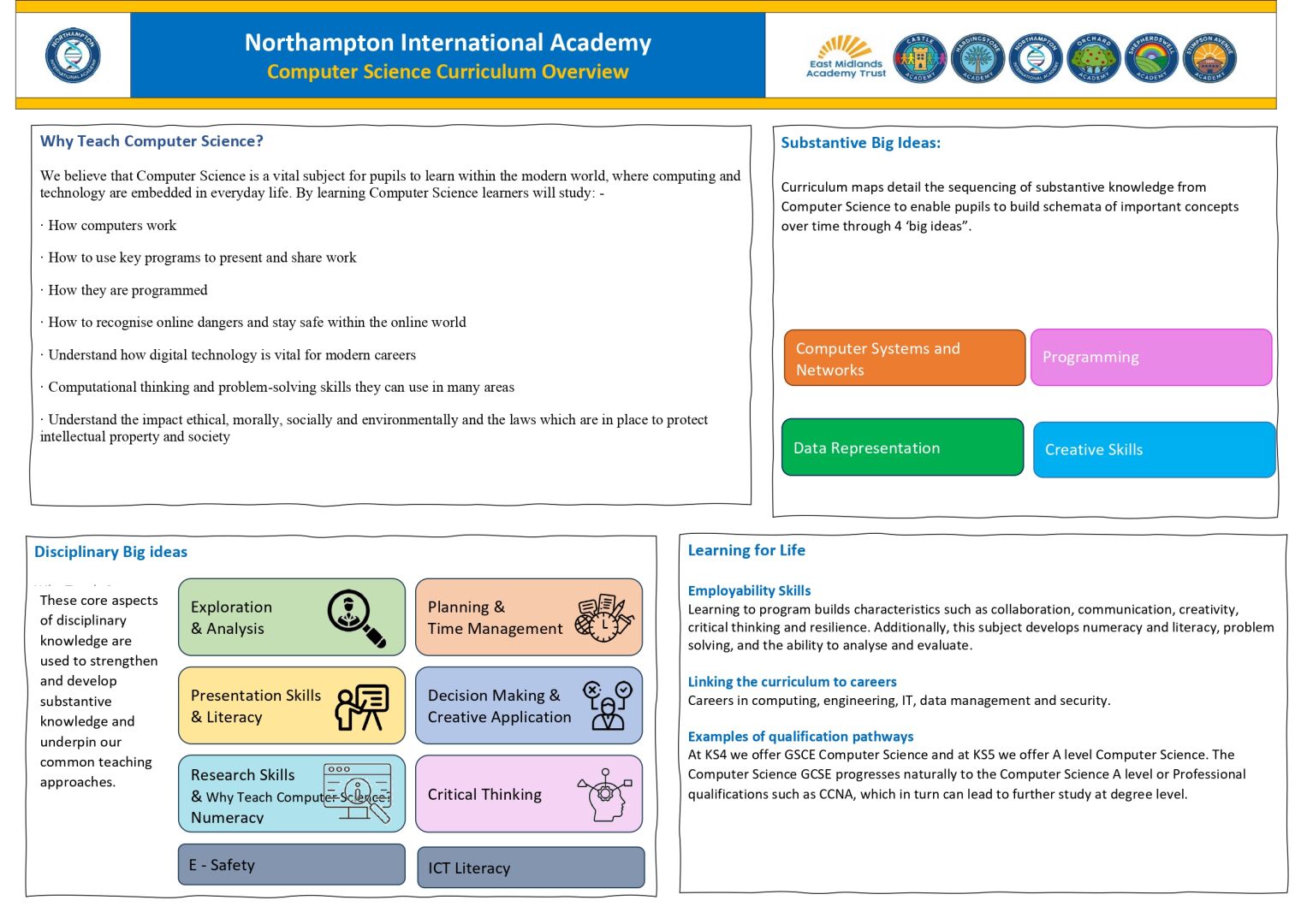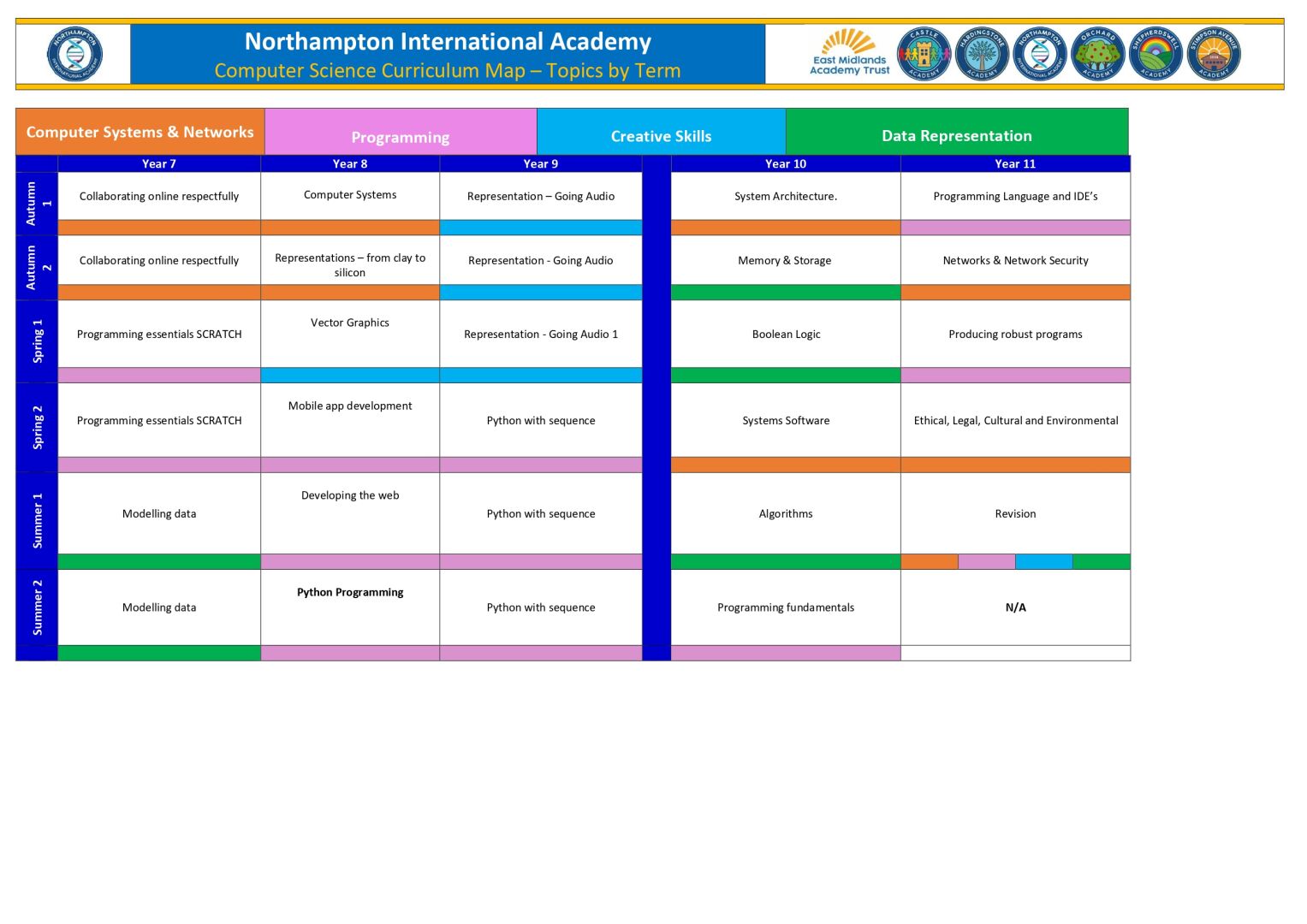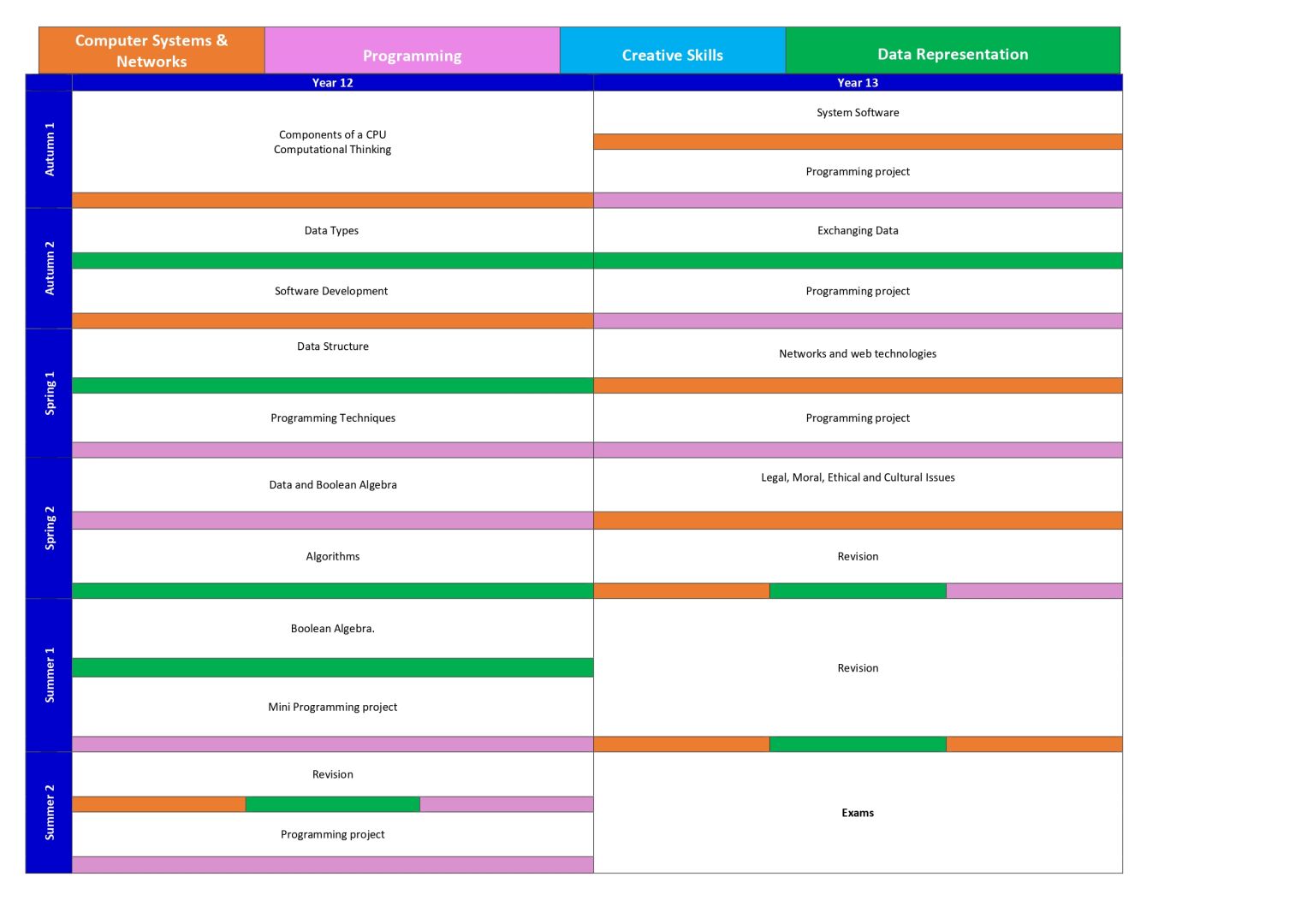Computing - Secondary
There are 4 strands to Computer Science, which span across the key stages. Each strand is delivered within the overall context of the year's teaching, supporting and complementing one another to teach the principles of information and computation, how digital systems work, and how to put this knowledge to use through programming. The four strands are:
- Knowing about computers
- Using computers
- Thinking computationally
- Programming
Computer Science is learning about the internal parts of a computer and how they work together to make your computer run, the different types of software that help you to use a computer, how to keep your computer safe from cyber-threats, the ethical, legal, cultural and environmental impacts of computers, problem solving using computers, how data is represented within a computer and programming techniques and languages. Learning to program builds characteristics such as collaboration, communication, creativity, critical thinking and resilience.
Throughout the Key Stages we continue to build on this knowledge and understanding so that our students are equipped to use Information Technology to create programs, systems and a range of content. They should also become digitally literate – able to use, and express themselves and develop their ideas through, information and communication technology – at a level suitable for the future workplace and as active participants in a digital world.
Careers:
Having a clear understanding of up to date local, national and global trends in Computing and IT related careers is essential in ensuring that young people are signposted to the range of career options available to them. Curriculum planning is designed with this in mind to ensure that key skills are developed widely to support success at the next stage of education or training.





